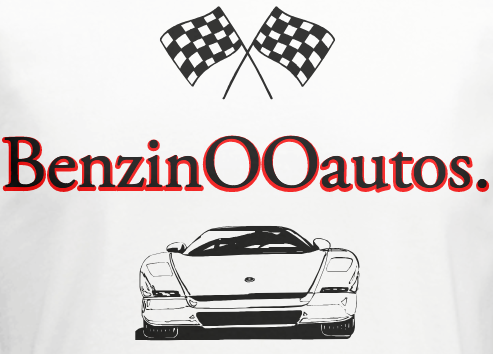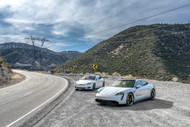Porsche Taycan Turbo S vs. Tesla Model S Performance: Electric Flattery After eight uncontested years, Tesla's Model S finally has a rival in the 2020 Porsche Taycan.
Posted by Dave VanderWerp on Feb 9th 2020
Porsche Taycan Turbo S vs. Tesla Model S Performance: Electric Flattery
After eight uncontested years, Tesla's Model S finally has a rival in the 2020 Porsche Taycan.
We didn't set out to dangle the competition under Tesla's nose. The plan was merely to line up a Tesla Model S against a Porsche Taycan—the Tesla's first true challenger—to see if there's a new EV front-runner. But if you want to experience the most powerful Supercharger in the greater Los Angeles area, you're going to find yourself at SpaceX's Hawthorne headquarters, which is also home to Tesla's design studio.
Advertisement - Continue Reading Below
As we set up the Model S for a max-charging session, Tesla employees mobbed the Taycan. Sizing it up on a granular level, they were visibly impressed by the build quality on the preproduction Porsche and genuinely excited about a new EV contender. Their level of open-mindedness—far exceeding what we've come to expect from Tesla owners and fanatics—is no doubt one of Tesla's strengths.
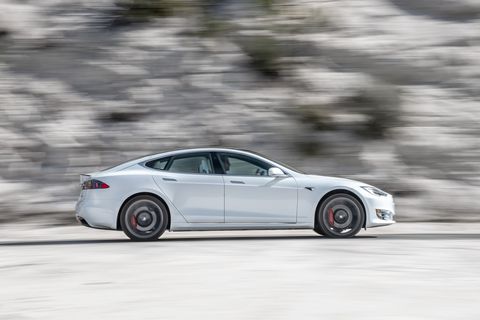
Marc UrbanoCar and Driver
Advertisement - Continue Reading Below
It's easy to forget just how open-minded they were when creating the Model S, which launched in 2012. At the time, the prevailing approach to electric vehicles involved automakers taking one of their smallest and cheapest cars and stuffing it with a battery good for maybe 100 miles of range. With rare exception, this bare-minimum effort to meet regulatory mandates for zero-emission vehicles resembled a toddler pouting when faced with new rules. Those obstinate automakers were right about one thing, though: The winning formula was definitely not an expensive economy car with pathetic range and a giant battery taking up much of the cargo space.
What the world really wanted was the approach Tesla took, exemplified by the Model S, its first car built completely in-house. A large, attractive, and expensive luxury car with a massive battery pack enabling a 265-mile EPA range. At the time, that alone was enough to be outrageous.

Marc UrbanoCar and Driver
Advertisement - Continue Reading Below
But Tesla went even further, rethinking details large and small. For example, the Model S has no ignition switch; employs an automatic secondary latch for the front trunk, eliminating the usual fumbling for the release; uses motorized door handles that extend to greet the driver; and features a giant 17.0-inch center touchscreen. Shortly after the Tesla's launch, General Motors reportedly compiled a lengthy dossier outlining the litany of its internal requirements that the Model S violated.
Tesla's ability to update the entirety of its software via wireless downloads is something other automakers are still enviously racing to match, as is its Autopilot suite of driver-assist features, which came out a few years later. Part of Tesla's mystique has become continual change, and the Model S has seen plenty. Its battery pack has grown by 15 percent, and its range even more, to an EPA-rated 373 miles on today's Long Range model. The sprint to 60 mph has been lopped nearly in half, and rear-facing third-row seats have come and gone, as have various models with smaller battery packs. Meanwhile, the price of the top-performing variant started at $105,400, rose to as high as $136,200, and is now back down to $101,190, which once again includes free use of Tesla's expansive Supercharger network.
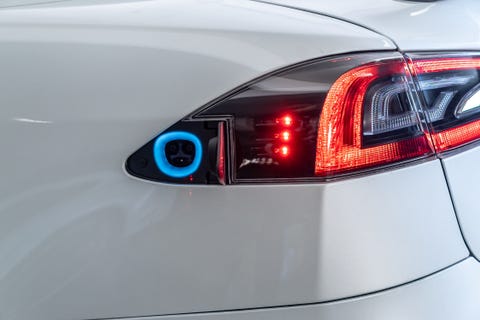
Marc UrbanoCar and Driver
Advertisement - Continue Reading Below
Thanks to the Model 3, which follows the Model S blueprint at a lower price point, Tesla is on the cusp of selling its millionth vehicle despite producing only four models thus far, none of which has yet to see a second generation. As much as Tesla has achieved, though, its most inconceivably difficult accomplishment is probably this: causing every other automaker to change course.
Which brings us to the Porsche Taycan, clearly a response to the Model S and that car's first real competitor. Molded into a swoopy and similarly sized four-door, packing a sufficiently large battery, and churning out 750 combined horsepower from its front and rear electric motors in the top model, the Taycan impressed us from the start. Then the bad news started trickling out: first, the absurdly high $186,350 starting price for the Turbo S, followed shortly by the absurdly low EPA range figure of 192 miles.
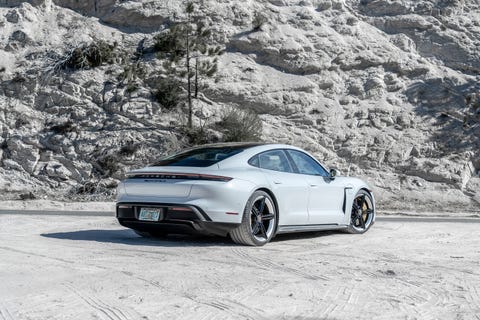
Marc UrbanoCar and Driver
Advertisement - Continue Reading Below

But an EV can't be judged on range alone. So, we took a Taycan Turbo S to meet its inspiration, the latest Model S Performance, complete with Tesla's Raven updates (i.e, new suspension hardware and an upgraded front motor) that rolled out in 2019. In this thorough work-up of the pointy end of the EV market, we pitted the two cars against each other in head-to-head tests of performance, real-world highway range, and fast-charging speed, then honed our impressions in California's Angeles National Forest.
2nd Place:
Porsche Taycan Turbo S
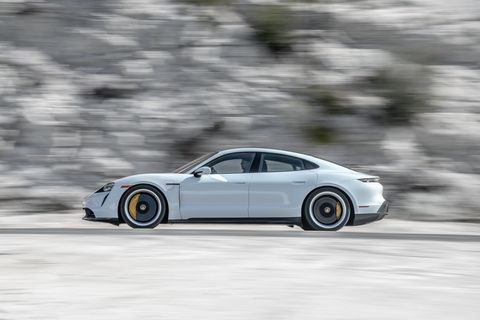
Marc UrbanoCar and Driver
Advertisement - Continue Reading Below
Highs: Arresting looks, time-warping acceleration, range is a nonissue.
Lows: Lacking in storage and rear-seat space, all-the-money price.
Verdict: Porsche creates the Porsche of EVs, applies Porsche pricing.
Getting in and out of the Taycan's low-mounted front seats and around the intrusively thick base of the B-pillars is moderately bothersome. But once you're in there, the view forward is the perfect blend of retreating hood and bulging fenders. Thanks to the aggressive roofline, the rearward view is, well, slitty, but the exterior presence it enables is totally worth it.
Driving it only furthers the sports-car sensation. It feels impossibly solid, so approachable and trusty that you find yourself comfortably flirting with its extremely high limits on the first on-ramp. Which is very Porsche, and very high praise for a car that weighs 5246 pounds. Part of the magic is in its great steering, with a tight on-center valley followed by linear effort buildup. And despite our car's 21-inch wheels, Porsche continues to impress in its unwavering commitment to ride quality.
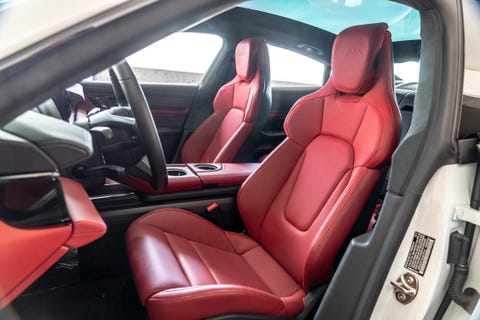
Marc UrbanoCar and Driver
Advertisement - Continue Reading Below
But these are all typical Porsche characteristics, and let's be honest, we fully expected the company to nail them. But does it move forward the EV state of the art?
Both cars are spectacular allies in a world of merging lanes and general traffic congestion. They can effortlessly vacate the space they occupied only an instant before, pouncing on the smallest of gaps. Enabling—no, encouraging—this megalomania are identical 1.1-second 30-to-50-mph and 1.6-second 50-to-70-mph acceleration times, the quickest we've ever measured.
But the Taycan's launch control hits harder than the Model S's, smacking us with 1.3 g's of initial acceleration long enough to befog our noggin. Is this what passing through a time-travel portal feels like? After we retrieved our hand-held radio, sunglasses, and clipboard from the back seat, we eyeballed the data: 60 mph in 2.4 seconds and the quarter-mile in 10.5 at 130 mph—the latter including a shift from the two-speed transmission that is on the rear axle. Unlike the Tesla, the Porsche will replicate those numbers over and over again. Plus, the Taycan's relative silence and ease of enabling launch control (select Sport Plus mode, hold brake and accelerator, release brake) means that it can be deployed nearly anywhere—at your neighborhood four-way stop, in a parking garage—without causing hysteria.
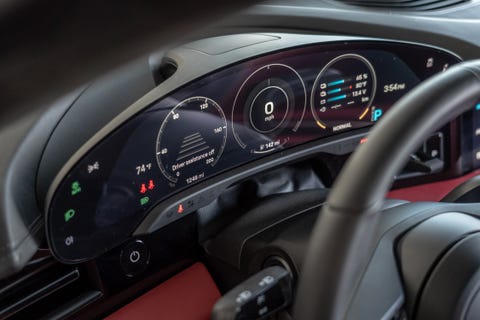
Marc UrbanoCar and Driver
Advertisement - Continue Reading Below
More surprisingly, the Porsche held its own in our 75-mph range test. While the EPA says there's a 134-mile difference in the range between the two, extrapolating from our 100-mile run, the real-world difference amounts to 10 miles in the Tesla's favor. The Taycan also won the other speed test, with its consistently higher charging rate providing quicker recharging. Tesla's Supercharger network might have more stations, but it also has more users, and Tesla owners have faced long queues just to plug in during peak travel times. At the Electrify America outpost where we charged the Porsche, 15 other plugs went unused the entire time we were there.
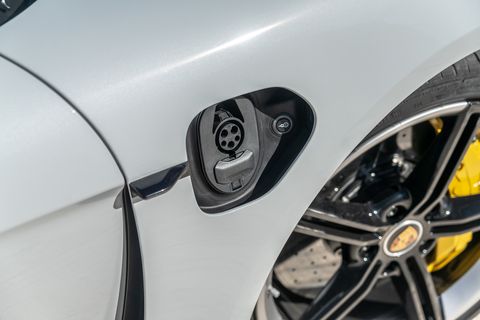
Marc UrbanoCar and Driver
Advertisement - Continue Reading Below
There was some disagreement over whether the Taycan's sci-fi electric soundtrack is appropriate or not, but the amplified Star Wars Landspeeder–esque noises are at least based in reality, originating from recordings of the Porsche's electric motors on a dyno. And not that the low and wide Taycan needs any help, but the whir does draw attention, creating visible confusion as bystanders try to identify the vessel zooming by.

And what a vessel it is. Judged from the driver's seat alone, the Taycan is the better car. It meets the high expectations of this storied brand, proves its real-world range, and moves the EV bar on a couple fronts. But price is always a factor; in this case, an insurmountable one.
1st Place:
Tesla Model S Performance
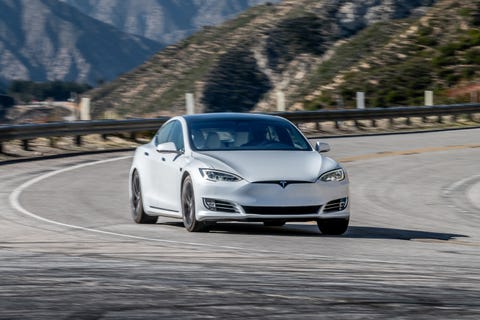
Marc UrbanoCar and Driver
Advertisement - Continue Reading Below
Highs: Spacious and airy, still megaquick, one-pedal driving.
Lows: Dull handling, feels its size and weight.
Verdict: Eight years in, the Model S continues to impress.
"Tesla's vision for the future in 2012 is still relevant today," quipped deputy reviews editor Tony Quiroga. That is massively impressive given the Model S's advanced age. Sure, there are reminders that this car is from Tesla's early days, such as the Mercedes-sourced window switches, shift lever, and turn-signal and cruise-control stalks. And eight years in, the build quality is still tainted by egregious fit issues. The uneven gap between the hatch and the rear bodywork, for example, doesn't look as though it's improved one bit.
But the Model S still has a lot going for it. The interior continues to impress, particularly with the $2000 white leatherette in our car. And Tesla accurately predicted—or perhaps caused—the shift in cabin design where infotainment screens would come to define modern cars' interiors. The Model S's rear seat feels far larger than the Taycan's, sitting three back there versus the Porsche's two. Taller side glass makes it feel airier inside, too, and its rear cargo area is double that of the Porsche. Even with a larger battery pack and longer wheelbase, the Model S weighs nearly 250 pounds less than the Taycan, although that's probably part of the reason the Tesla is noisier than the Porsche at 70 mph.
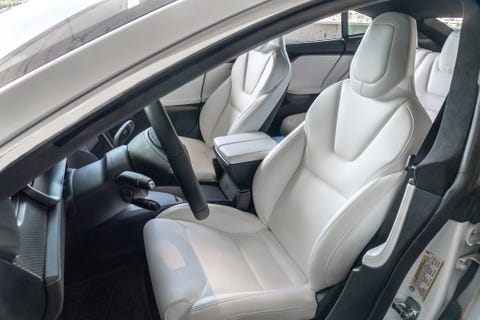
Marc UrbanoCar and Driver
Advertisement - Continue Reading Below
This latest Model S Performance is even more sophisticated and confidence-inspiring than before, thanks to the new air springs and adaptive dampers. Ride quality has certainly improved, and there's substantial adjustability between the three suspension modes. There's not much steering feel, though, and the turn-in from the Tesla's relatively giant steering wheel is far slower and less crisp than the Porsche's. The Model S is more competent than fun, and the harder you push, the less impressive it becomes. Stability control intervenes early—there's no way to dial it back—and the brake pedal went soft during our repeated stops from 70 and 100 mph, producing a warning message.
Tesla pipped Porsche in our rolling-start 5-to-60-mph test by a tenth of a second, but in every other test, the Model S proved slightly slower. Accelerating to 60 mph in a monumentally quick 2.5 seconds, it lurked just 0.1 second behind the Taycan. But the gap widened to more than three seconds by 150 mph. And for all the discussion of the Model S's fleetness, it is incredibly fussy to achieve its max-acceleration times. It must be fully charged, and using the Ludicrous Plus mode requires preheating the battery for 45 minutes. After the initial hero run, the Tesla's times fall off quickly, slowing to the point that we were jotting notes while waiting for the quarter-mile to arrive.
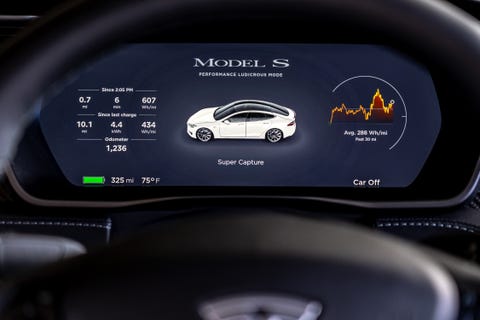
Marc UrbanoCar and Driver
Advertisement - Continue Reading Below
The Model S excels in the city, where Tesla's expertly calibrated one-pedal operation introduces fluidity to stop-and-go driving. Porsche made a conscious decision to forgo one-pedal driving, and we missed it every time we hopped back into the Taycan, where the strongest coasting regen is barely noticeable. You drive Porsche's EV as you would any other automatic Porsche: with two pedals. Unlike those gas models, though, the Taycan's brake pedal is touchy and nonlinear.

Tesla wins this one largely on price, but the Model S's virtues stand on their own, too. Some spreadsheet fiddling suggests that the finishing order wouldn't have changed had we pitted the Tesla against the far slower $105,150 Taycan 4S. Given the Model S Performance comes at a $85,160 discount to the Taycan Turbo S, there's no question which is the better buy.

Advertisement - Continue Reading Below
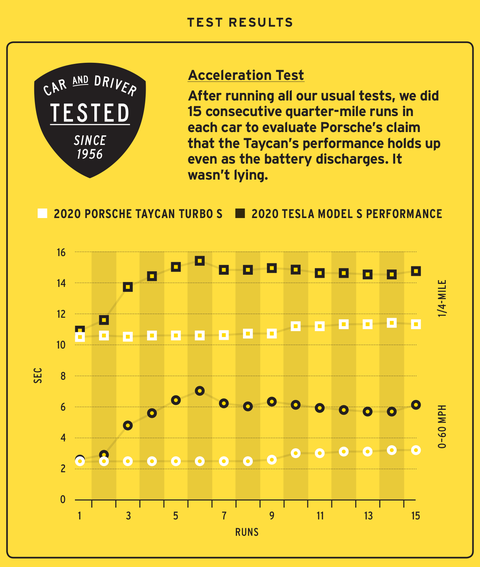

Advertisement - Continue Reading Below
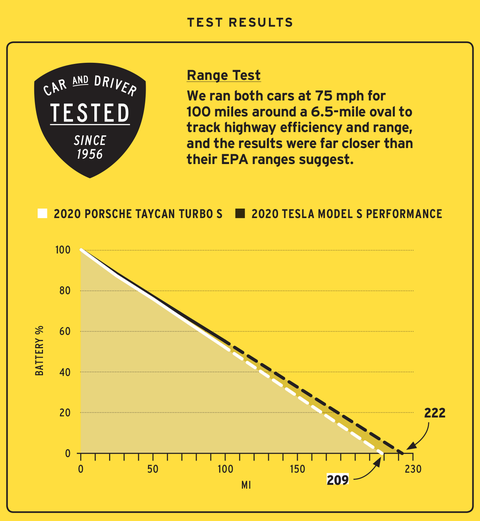
Specifications
2020 Porsche Taycan Turbo S
VEHICLE TYPE front- and rear-motor, all-wheel-drive, 4- or 5-passenger, 4-door sedan
PRICE AS TESTED $205,180 (base price: $186,350)
MOTORS 2 permanent-magnet synchronous AC, 255 and 449 hp, 325 and 450 lb-ft; combined output, 750 hp, 774 lb-ft; 93.4-kWh lithium-ion battery pack
TRANSMISSION 1-speed direct drive (front), 2-speed automatic (rear)
CHASSIS
Suspension (F/R): control arms/multilink
Brakes (F/R): 16.5-in vented, cross-drilled ceramic disc/16.1-in vented, cross-drilled ceramic disc
Tires: Pirelli P Zero PZ4 Elect, F: 265/35ZR-21 101Y NF0 R: 305/30ZR-21 104Y NF0
DIMENSIONS
Wheelbase: 114.2 in
Length: 195.4 in
Width: 77.4 in
Height: 54.3 in
Passenger volume: 88 ft3
Cargo volume: 16 ft3
Curb weight: 5246 lb
C/D
TEST RESULTS
Rollout, 1 ft: 0.2 sec
60 mph: 2.4 sec
100 mph: 6.0 sec
130 mph: 10.5 sec
150 mph: 15.2 sec
Rolling start, 5–60 mph: 2.9 sec
Top gear, 30–50 mph: 1.1 sec
Top gear, 50–70 mph: 1.6 sec
¼-mile: 10.5 sec @ 130 mph
Top speed (mfr's claim): 162 mph
Braking, 70–0 mph: 155 ft
Braking, 100–0 mph: 306 ft
Roadholding, 300-ft-dia skidpad: 0.99 g
C/D
FUEL ECONOMY
300-mi trip: 70 MPGe
EPA FUEL ECONOMY
Combined/city/highway: 68/67/68 MPGe
Range: 192 miles
–
2020 Tesla Model S Performance
VEHICLE TYPE front- and rear-motor, all-wheel-drive, 4- or 5-passenger, 4-door sedan
PRICE AS TESTED $114,690 (base price: $101,190)
MOTORS 1 permanent-magnet synchronous AC, 1 AC induction, 275 and 503 hp, 310 and 531 lb-ft; combined output, 778 hp, 841 lb-ft; 98.0-kWh lithium-ion battery pack
TRANSMISSION 1-speed direct drive (front), 1-speed direct drive (rear)
CHASSIS
Suspension (F/R): multilink/multilink
Brakes (F/R): 14.0-in vented disc/14.4-in vented disc
Tires: Michelin Pilot Sport 4S, F: 245/35ZR-21 96Y TO R: 265/35ZR-21 101Y TO
DIMENSIONS
Wheelbase: 116.5 in
Length: 195.7 in
Width: 77.3 in
Height: 56.9 in
Passenger volume: 95 ft3
Cargo volume: 28 ft3
Curb weight: 5003 lb
C/D
TEST RESULTS
Rollout, 1 ft: 0.2 sec
60 mph: 2.5 sec
100 mph: 6.4 sec
130 mph: 11.9 sec
150 mph: 18.5 sec
Rolling start, 5–60 mph: 2.8 sec
Top gear, 30–50 mph: 1.1 sec
Top gear, 50–70 mph: 1.6 sec
¼-mile: 10.7 sec @ 125 mph
Top speed (mfr's claim): 163 mph
Braking, 70–0 mph: 156 ft
Braking, 100–0 mph: 313 ft
Roadholding, 300-ft-dia skidpad: 0.92 g
C/D
FUEL ECONOMY
300-mi trip: 70 MPGe
EPA FUEL ECONOMY
Combined/city/highway: 97/98/96 MPGe
Range: 326 miles
**Originally written by:
https://www.caranddriver.com/reviews/comparison-test/a30799498/2020-porsche-taycan-turbo-s-vs-2020-tesla-model-s-performance/"
